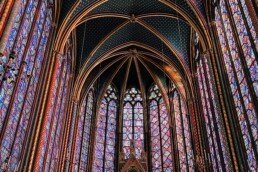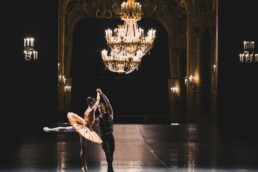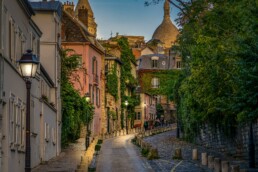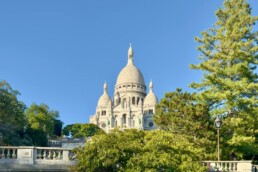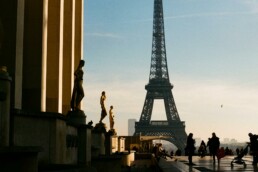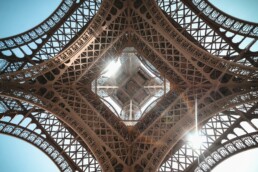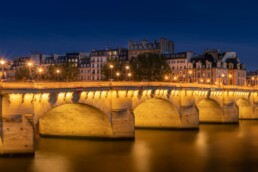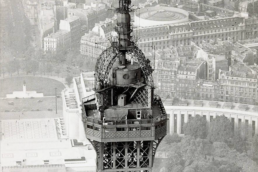Stretching its metallic arches over the serene waters of the Seine, the Bir-Hakeim Bridge stands as a silent witness to the history of Paris, a poetry of iron and steel in an ever-changing landscape. Constructed between 1903 and 1905, it was initially named “Pont de Passy,” in homage to the neighborhood it connects to Grenelle. Its current name, however, commemorates a heroic episode of World War II, in memory of the Battle of Bir-Hakeim where the Free French Forces valiantly resisted in 1942.
The structure of the bridge is a masterpiece of early 20th-century metal architecture, with its elegant cast iron columns and bronze statues. This functional elegance is reminiscent of the meticulous work of a jeweler, each rivet glistening like so many black diamonds set into the urban fabric.
Among the picturesque anecdotes that punctuate the existence of this bridge, one of the most charming is that of the lovers who, at nightfall, come to attach padlocks to the metal grilles as a sign of their eternal love. The keys, meanwhile, are thrown into the Seine, carrying with them whispered vows, their silvery clinking blending with the gentle lapping of the waves. This practice, although romantic, has often sparked passionate debates about the conservation and maintenance of heritage sites.
Another memorable episode is the filming of Christopher Nolan’s “Inception” in 2010. In an unforgettable scene, the characters Cobb and Ariadne, played by Leonardo DiCaprio and Ellen Page, stroll along the bridge as reality bends and twists around them. The Bir-Hakeim Bridge, with its perfect symmetry and clean lines, becomes the setting for an oneiric exploration, transforming the site into a gateway to the imagination.
The bridge also pays subtle homage to Gustave Eiffel, whose tutelary shadow looms over Paris. Indeed, the bridge offers an unobstructed view of the Eiffel Tower, that grand iron lady who has dominated the city since 1889. During sunsets, passersby can admire the spectacle of golden reflections mingling with the reddish hues of the sky, a living painting that evolves with the seasons.
Thus, the Bir-Hakeim Bridge, with its two levels one for cars and pedestrians, the other for the metro is much more than a simple crossing from one bank to another. It is a place of encounters, dreams, and memories, a bridge between past and present, a symbol of human ingenuity at the heart of the City of Light. With every stroll on its worn pavements, it whispers fragments of stories, inviting each person to add their own page to this open book over the Seine.
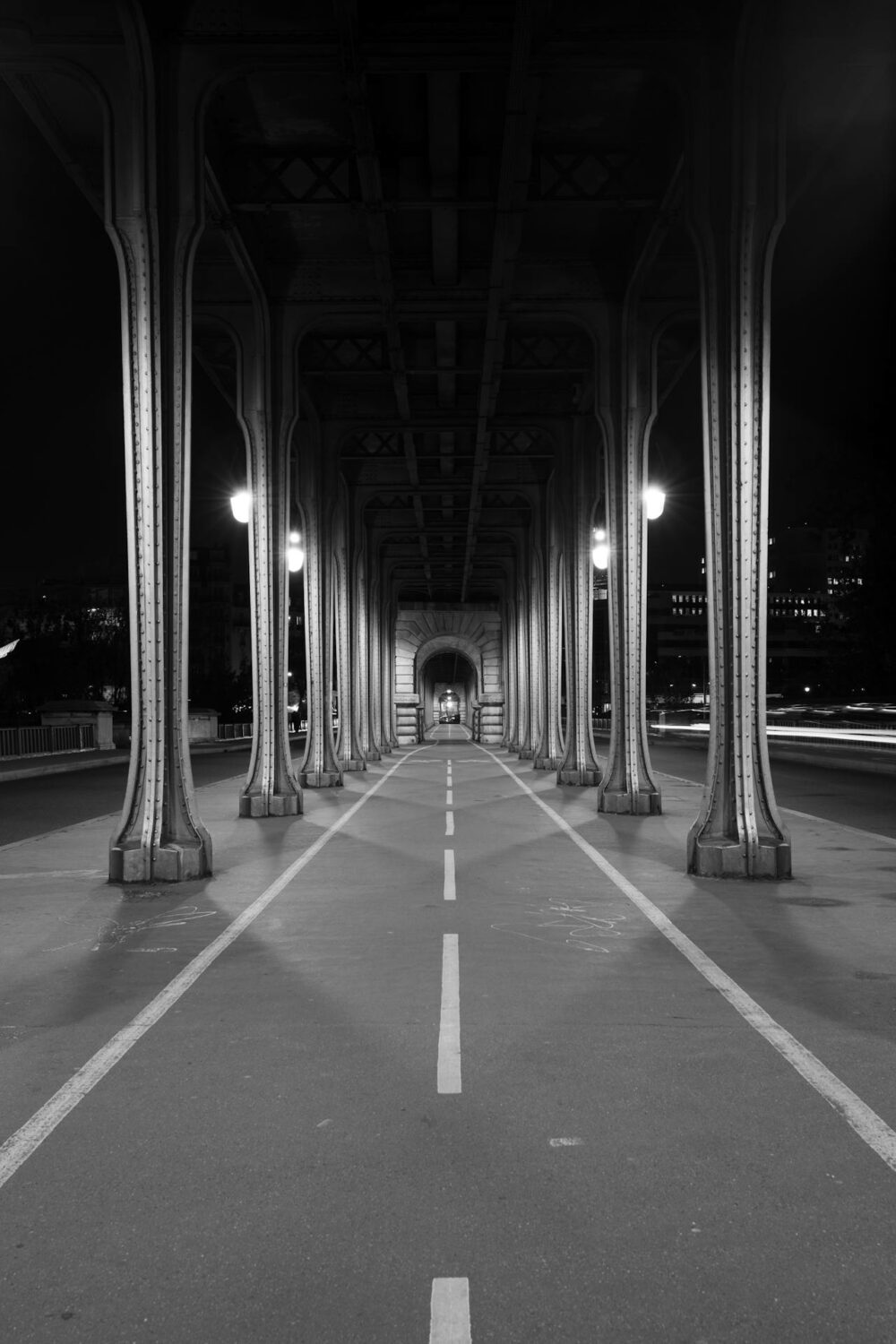

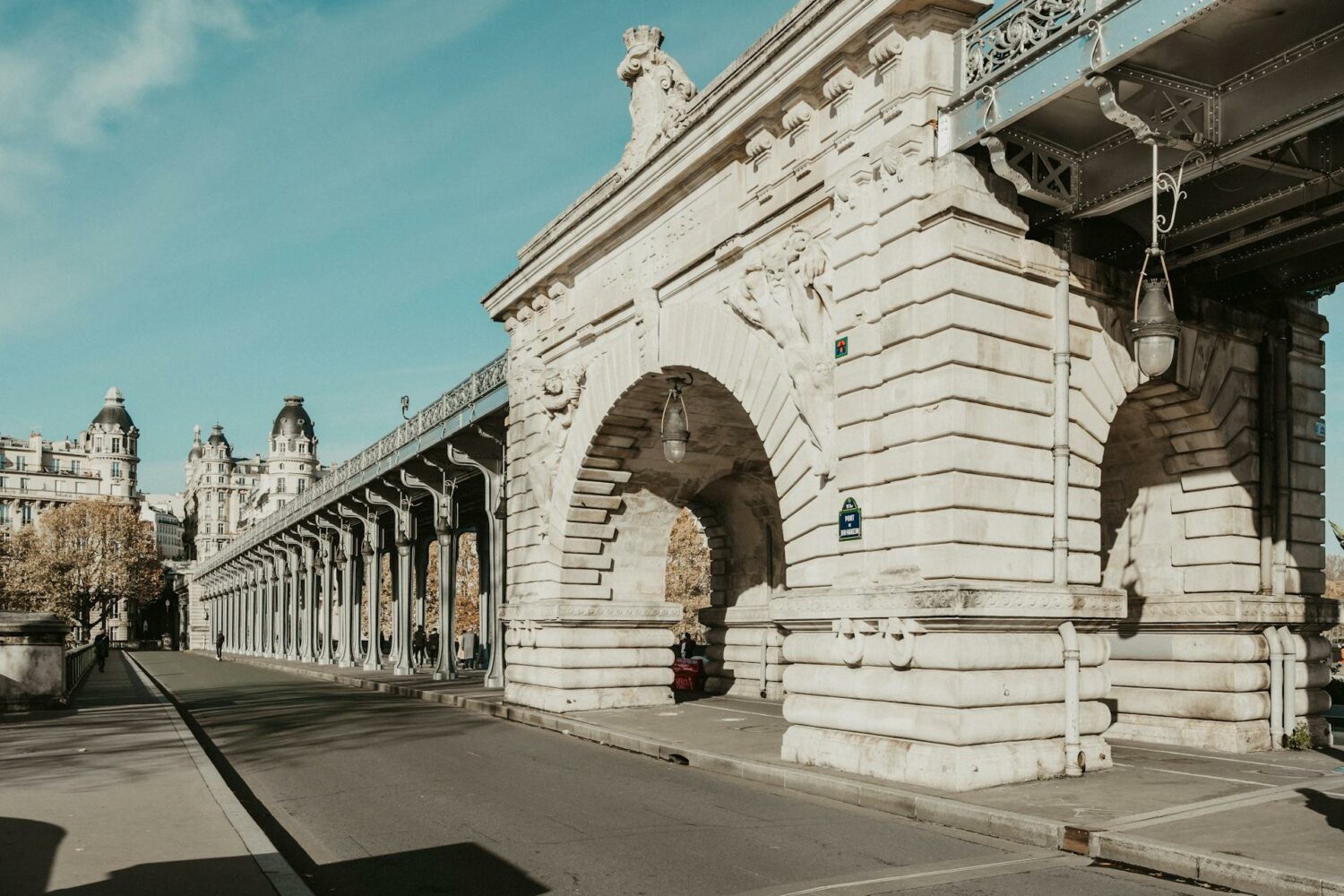
Lire également :
11 November 2024
The Sainte-Chapelle: Chronicles of Light and Mystery
5 November 2024
Through the Veils of Creation: CHANEL and the Paris Opera
5 November 2024
The Sacré-Cœur: A Story of Faith and Beauty
5 November 2024
The History of the Trocadéro: A Parisian Memory
5 November 2024
The History of the Eiffel Tower: A Memory of Iron and Light
5 November 2024




